
- How about winning a flight ticket worth up to US$500?
- Become a member by January 31st and get a chance to win!
Mexico is a country worth visiting for so many reasons. However, media might tell you that Mexico is a dangerous place. This might leave you wondering if Mexico is safe to visit…
12min
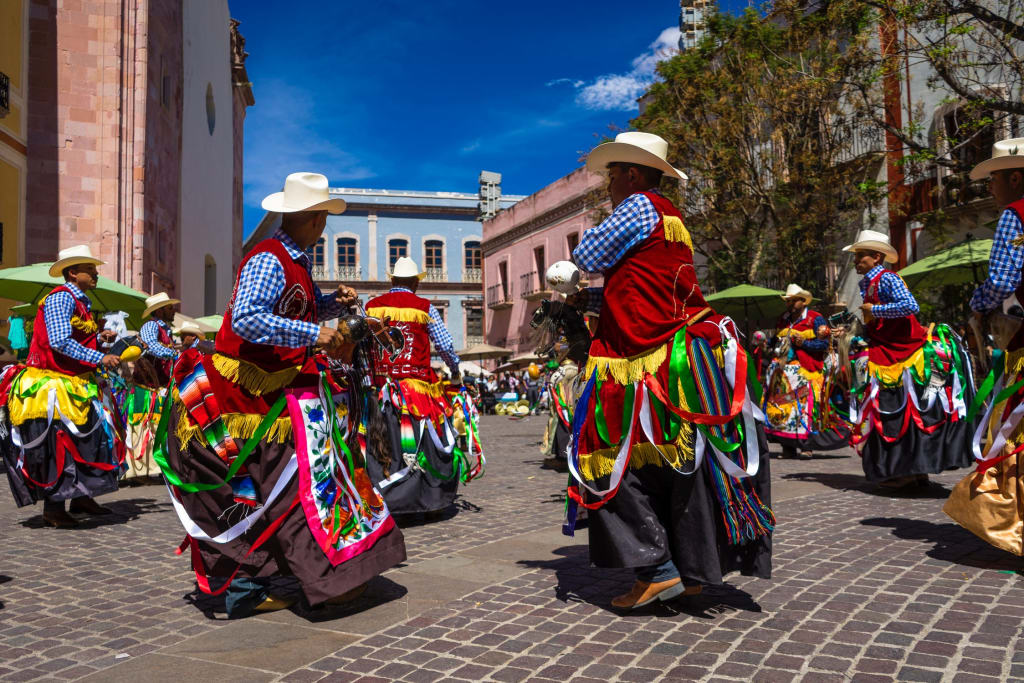
Mexico, a Latin American country located in North America, is a popular destination among Americans, Canadians, Europeans, and other Central and South American tourists.
It is the most visited country in Latin America and second most visited in the Americas, after the United States. The low prices allow travellers to travel on a low budget which makes it a great option as a gap year destination.
Additionally, as Mexico is a Spanish speaking country, it is a perfect place to learn a new, useful language.
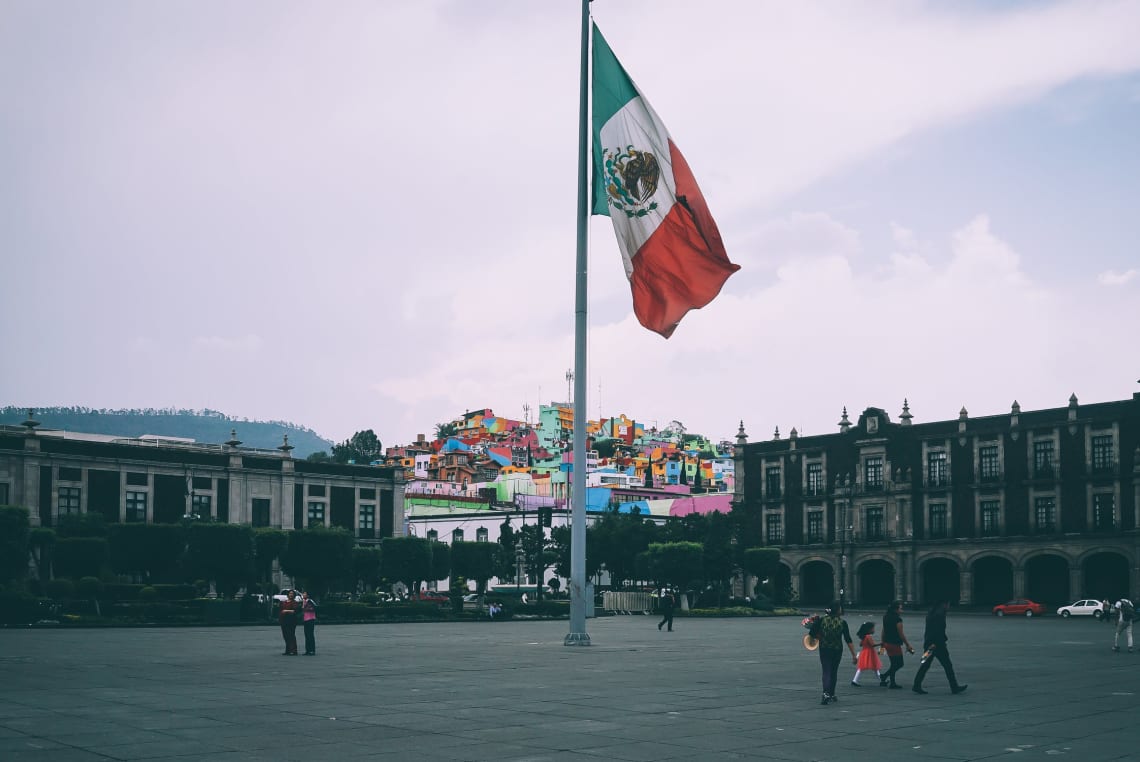
This country holds 10-12% of world’s biodiversity, making it fourth most biodiverse country in the world. The birthplace of chocolate and home to many ancient civilizations, Mexico is truly an incredible place that is on top of a bucket list for many travel lovers.
The cuisine, tequila, ancient ruins, gorgeous beaches and cenotes, music, incredible traditions makes Mexico a country that must be visited.
However, there is also no doubt that some parts of the country are less safe, and some behaviours can make you more vulnerable and put you in danger.
This Latin American country has a poor reputation and often makes headlines due to the violence inside the country. Media outlets illustrate Mexico as the country of gangs, shootings, and drug smuggling, portraying the country as unsafe to travel in.
This can make people think that Mexico is dangerous. Many are also concerned about other events such as natural disasters or health risks.
Check out these tips for travelling in Mexico on a budget.
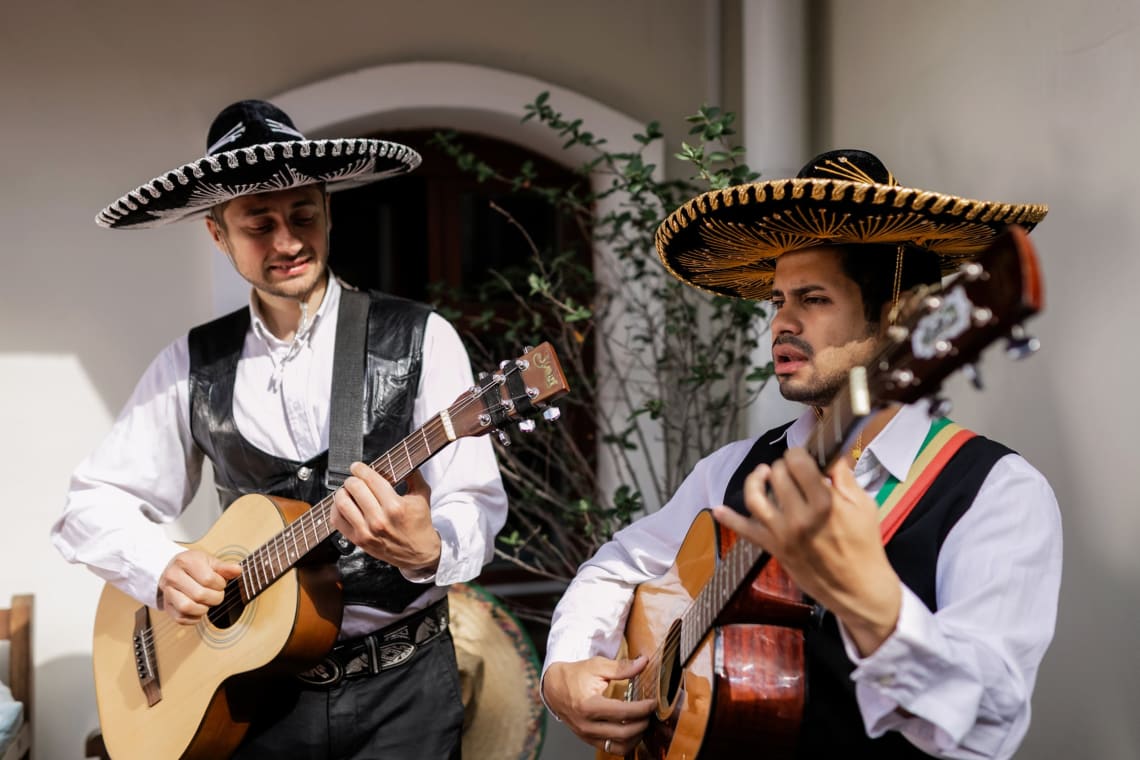
Although most visits to Mexico are trouble free and it is very possible to have a pleasant and safe trip, travellers should be aware of the high crime in Mexico.
Mexico, situated between the United States –largest consumer of cocaine, and South America –the biggest producers of this drug, is a hotspot for drug trafficking. This industry has caused the country to go into a silent war.
Mexican war on drugs is an effect of the government attempting to decrease the violence caused by drug cartels. This has exacerbated the violence as the intervention has resulted in public killings, that in some instances have included foreign tourist but more often innocent Mexican civilians.
States most affected by the drug war are Baja California, Guerrero, Michoacán and Sinaloa.
Cities like Tijuana, Juarez, Chihuahua, Acapulco and Los Cabos are on the list of 50 most dangerous cities in the world. Crime rate in those places is extremely high.
Generally, the northern states and cities bordering the USA, are more troubled than the rest of the country. Organised crime, kidnapping, extorsion and shootings are a common occurrence. It is advised to avoid those states or take higher precautions when choosing to visit.
The most common crimes in Mexico are: domestic and family violence, property crimes including vehicle thefts, followed by small scale drug dealing, business and home burglary and the lowest scoring one – the ones that most people, especially solo female travellers are worried about – rape, femicide and kidnapping score at the end of the scale (Statista, 2022).
From those statistics it is easy to see that the most common crimes are ones that an ordinary traveller would not be involved in. Those statistics, however, are a sad reality for Mexicans, as many of them are victims to the violence.
The high levels of crime are due to rivalry between drug cartels and the conflict between the government and criminal gangs. Those usually do not involve tourists.
However, there have been incidents where tourists did become victims to the gang violence. This is usually due to the person being in the wrong place at a wrong time, as tourists or foreigner residents are not usually specifically targeted.
As a result of those crimes, the Mexican government has deployed 1,445 troops to tourist areas with the aim of protecting the visitors. Touristic areas will see a lot of authorities patrolling the zone. Authorities can often be found around malls, main squares, banks, busy streets, and beaches.
Yucatán – home of Cancun and Tulum, Chiapas, Tlaxcala, and Campeche are the safest states. Mérida is considered the safest town in Mexico and the low crime rates reflect this. Those places are most frequented by tourists.
Since the country relies on tourism, the government puts a lot of effort into keep any danger out of those zones so not to decrease the number of visitors. Petty theft and scams are probably the worst that can happen to majority of tourists.
Generally, touristic spots are a lot safer than rural areas or off the beaten path, non-touristy locations.
Planning a solo trip to Mexico? Chek out this guide for safety and fun.
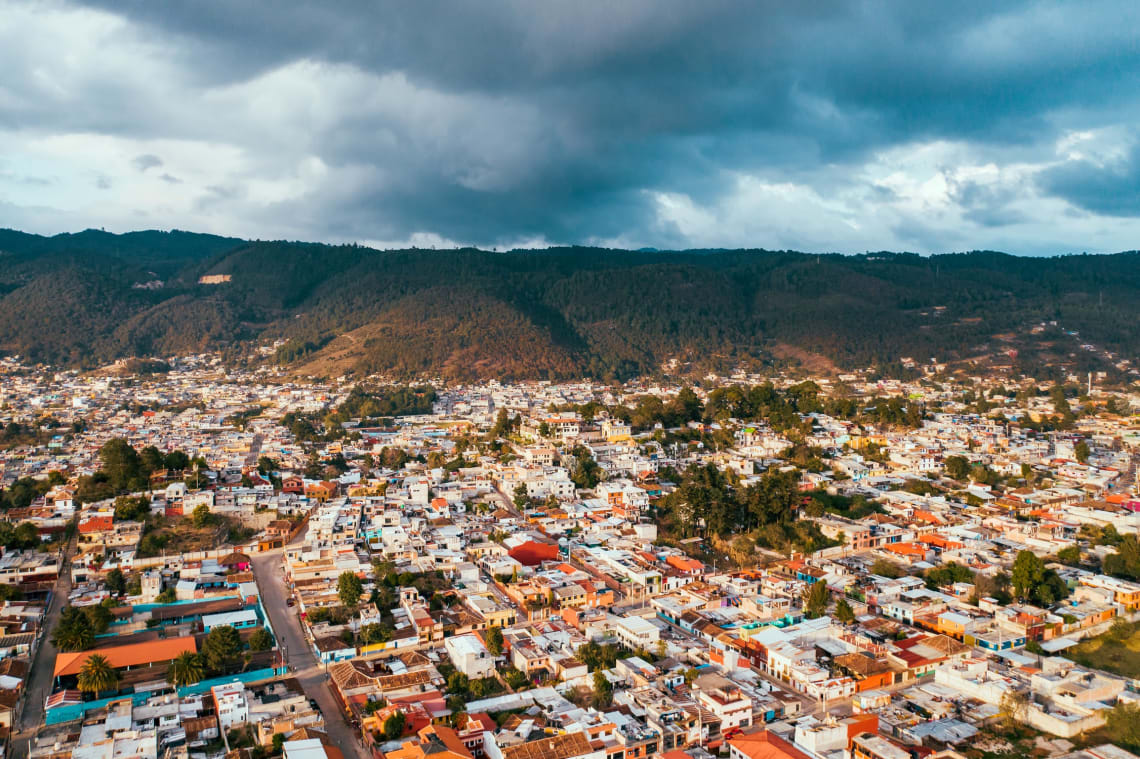
Solo female travellers should be more cautions in Mexico. Macho culture is prevalent in this country and domestic violence towards women is an ongoing struggle and a sad reality for many Mexican women.
There are many solo females travelling in Mexico and usually there are little major problems. Catcalling will be a common occurrence, but this already is a reality for women in every country.
In most of the cases the harassment does not get physical, although there are some extreme cases of sexual harassment - grabbing, rape, and kidnapping.
When catcalled or harassed it is usually enough to ask to be left alone, ignore completely, and move to a safe location such as a bank or a shop.
Solo women are more at risk when being out at night by themselves especially when outside of touristic areas. All other normal precautions should be taken such as being aware of surroundings and personal items and asking locals which areas are dangerous and avoiding them. Do not use unauthorised, independent taxi drivers.
Read how Worldpackers helps solo female travellers feel safer.
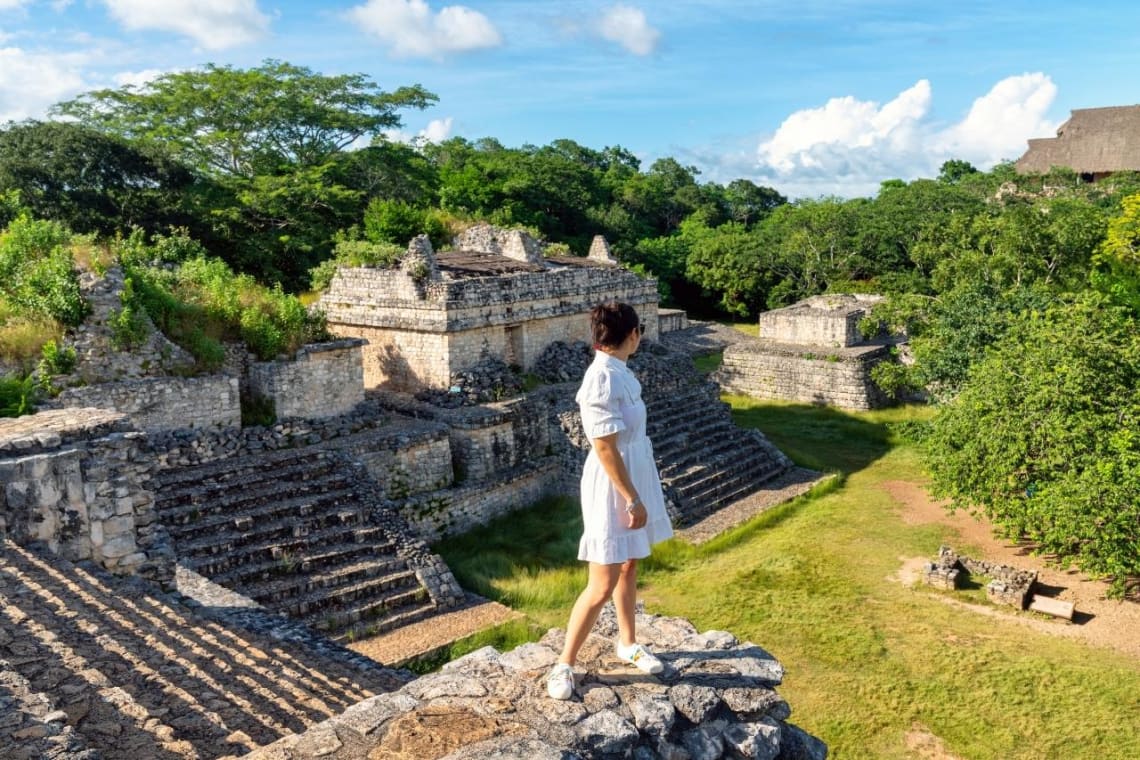
Homosexual activity is legal in Mexico, and it is illegal to discriminate a person based on their sexual orientation.
In 2019, Equaldex (Equality Index of LGBTQ rights) has conducted a public opinion survey on LGBTQ+ views of Mexicans. 69% of people surveyed think that society should accept homosexuality and 53% considers their areas safe places for homosexual people.
However, as Mexico is a catholic country and many of its citizens are religious and conservative, the LGBTQ+ communities sadly still face discrimination. This is largely a problem for the indigenous people as their families often do not accept their sexual orientation.
The travellers get the privilege of not being as discriminated as the nationals do, since they are not Mexican. However, it is still advised to keep public affection to a minimum, especially when travelling in rural areas.
Puerto Vallarta is known as ‘Mexico’s LGBTQ+ capital’ and some areas of Mexico City are also LGBTQ+ friendly. The City Pride takes place in Mexico City in the month of June. Queer bars and beaches can be found in places like Cancún.
Check out those LGBTQ celebrations around the world.
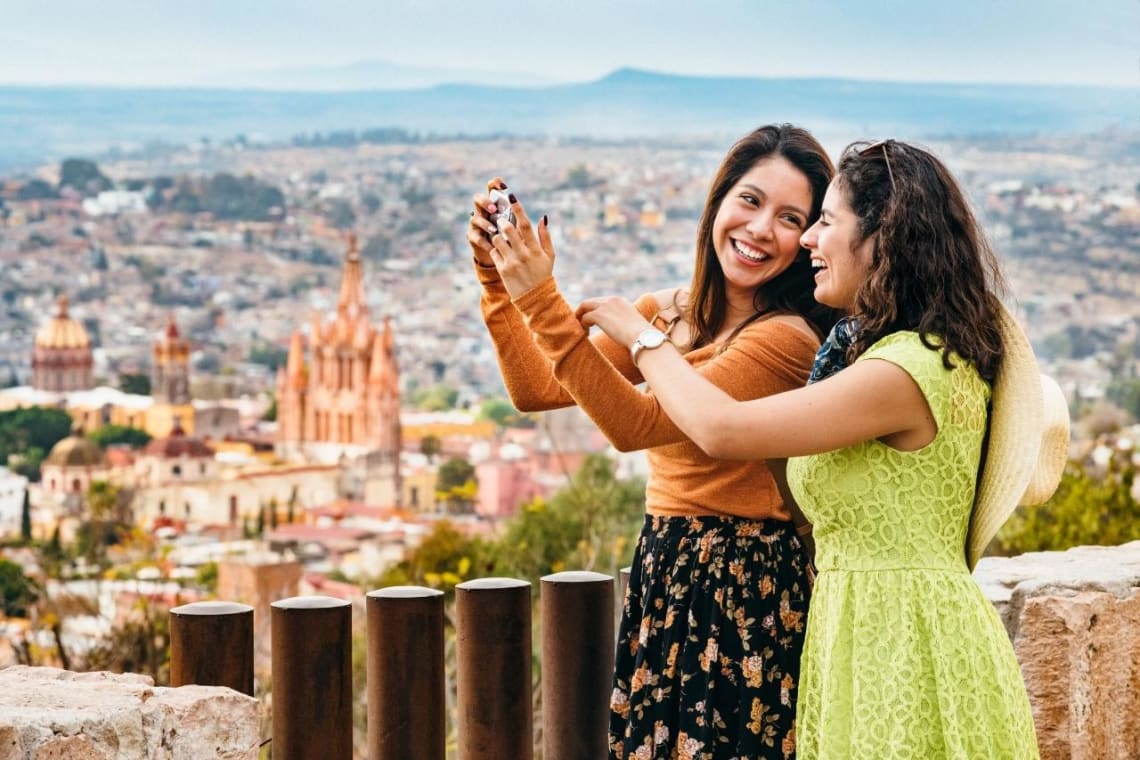
1. Do not get involved with drugs.
The party vibes of many places in the country might be encouraging drug use. Stay away from anyone involved with drugs to minimize any chances of getting caught up in a dangerous situation or a bad crowd.
2. Stay indoors at night and use authorised taxis only.
Do not wander around at night, especially if you’re a solo female traveller or intoxicated.
Plan your activates to ensure that you will be back in your accommodation after dusk, as the streets become a meeting point for many criminals at night. Use authorised taxis only if traveling when dark.
3. Do not show off your expensive valuables.
Do not walk around holding your expensive phone or camera. Similarly, avoid wearing expensive looking jewellery, purses, or clothes. This is to not attract any unwanted attention and give a criminal a sign that you have something that is worth being robbed or assaulted for.
This can help you to avoid petty crimes such as snatch and runs or pickpocketing.
Busy markets, squares and bus terminals are places where you should pay extra attention to your stuff.
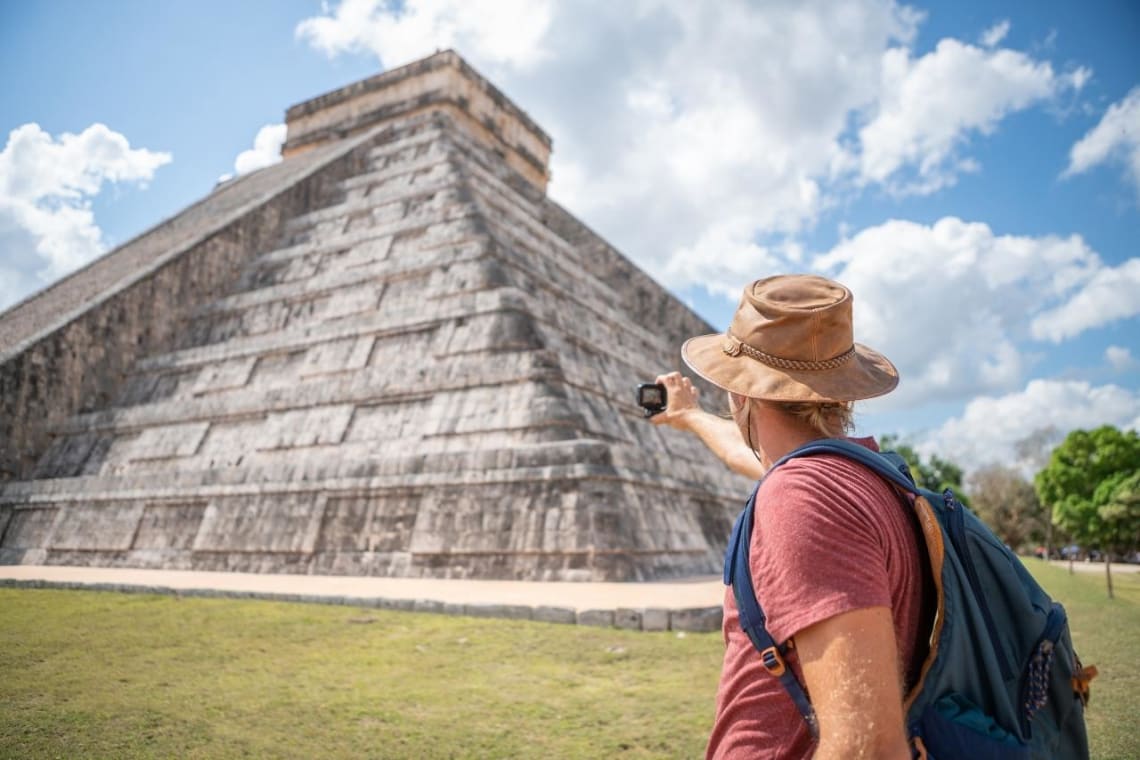
4. Always avoid areas considered dangerous.
When you first arrive in Mexico try to find out from the locals what areas are dangerous and always avoid them.
Areas that are considered dangerous by locals will be riskier for foreigners. Make sure you know where not to go. If you want to visit an area that is considered unsafe for travellers, you can hire a local guide that will keep you safe.
5. Listen to your gut and be aware of your surroundings.
The best advise on how to stay out of danger in any country and in any situation is to always listen to your gut and be aware of what is happening around you.
If you happen to walk around and find yourself in an area that starts to feel dodgy, your body will let you know by giving you feelings of anxiety or stress.
If you start to feel uncomfortable and when the locals are looking at you rather weird, turn around and leave the area. Always trust your instincts.
6. Be extra careful when out in nature
Marijuana and other drug cultivation are located out of cities in zones such as forests or hills. It would be very dangerous to accidently step into narco-controlled area.
It is best to use a knowledgeable and well reputed guide for adventures into nature in off the beaten path locations.
7. Volunteer with Worldpackers
Volunteering with Worldpackers in Mexico means you are safe.
There are so many volunteering opportunities in Mexico. Participate in a world exchange, learn new skills, meet new people, and make a positive impact during your trip.
You will be taken care of by your host and will be rarely alone, as your placement might include other volunteers, which means you can make new life lasting friendships easier!
For a more authentic way to travel, choose an opportunity in an area not frequented by travellers. If you prefer to be social and spend time with other international travellers, choose to volunteer at a hostel. To connect with nature, choose to volunteer at a farm.
Whatever you want your experience to be, Worldpackers has something for you.
Here are some amazing opportunities:
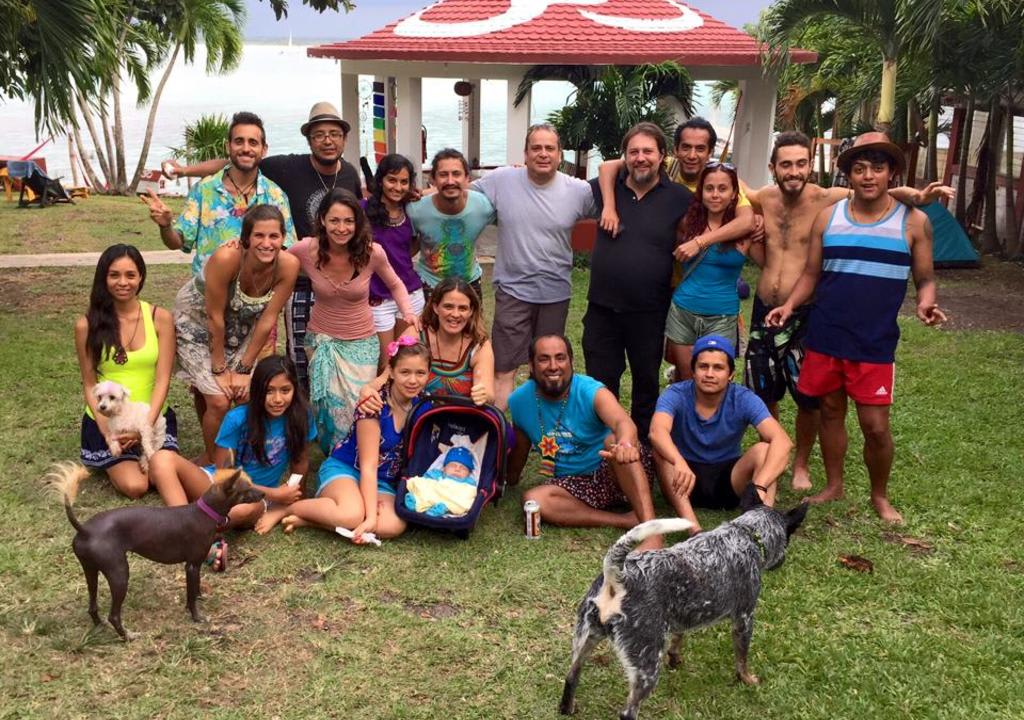
8. Learn a little bit of Spanish
Although it is possible to move around the country without speaking Spanish, knowing emergency phrases might come in useful.
"Ayuda" means help and "¿Habla inglés?" means do you speak English? Knowing basic phrases or having the means to use a translator if you do not speak the language can really make a difference in times of emergency.
Read the these tips on how to overcome language barrier abroad.
Planning a trip to Mexico? Take a look at this article on the guide to travelling in Mexico.
Safety and security are not the only concerns of people wishing to visit the country, as Mexico is located between both oceans and on the Ring of Fire.
This position makes Mexico one of the most seismically active countries, meaning the country is prone to earthquakes that then can consequently lead to floodings, tsunamis, volcanic eruptions, and landslides. Additionally, Mexico is notorious for the storm season.
Mexico sees over 4,000 earthquakes every year and out of its 3,000 volcanoes, 48 are active.
The hurricane season begins in June and lasts until November, most prominent between August and October.
Areas along the Pacific and Atlantic coast are most exposed to natural disasters, and inland are usually safer. The coastline is at risk of hurricanes and cyclones. According to scientists, major storms occur once every few years.
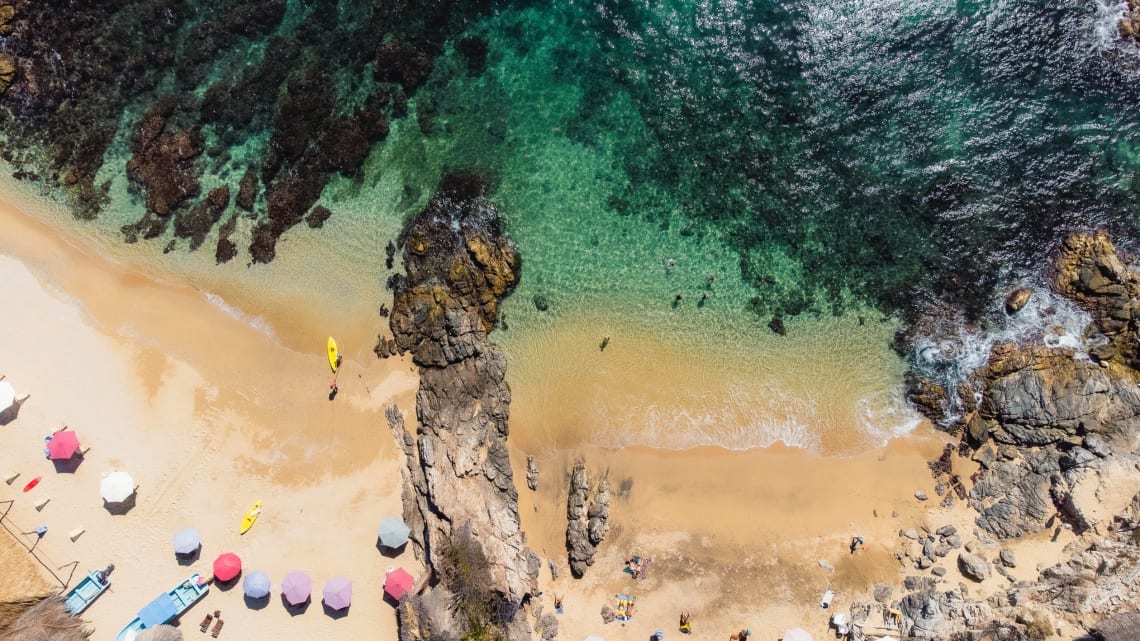
Most common disaster are landslides and floods. Due to heavy rainfalls, those occur every year in the rainy season nevertheless they are rarely catastrophic. Areas at risk will usually be restricted and roads will be closed.
Although today’s technology is quite advanced it is still impossible to predict all natural disasters coming, and some disasters cannot be predicted at all.
When travelling to natural disaster-prone countries such as Mexico, it is important to be aware of the dangers and to know what to do should a disaster struck.
It is safe to visit Mexico during the rainy season. Most natural events are not extreme and will not cause death, but that is not to say that this cannot happen.
Travelling off season means less crowds, lower prices and supporting locals during their down time.
The 2021 hurricane in Mexico, Hurricane Grace, has killed eight people, and the 2005 Hurricane Wilma created 87 fatalities.
Therefore, before deciding to travel in Mexico during the storm season it is worth remembering that both coasts are vulnerable to hurricanes. Southern destinations are less prone to violent hurricanes; therefore, a traveller might wish to choose a southern or inland location, rather than a northern one, to maximize probability of being safe from any violent natural disasters.
If you are looking for recommendations on where to go, check out this article on the 13 best places to visit in Mexico.
If you do decide to visit between June and November, there are some things you should know to be better prepared:
1. Look at the weather reports before your departure and during your stay.
Storms and hurricanes occur after few days of bad weather, and those often can be predicted. If you see such reports before your departure, you should postpone your travels.
Once you’re in the country keep on monitoring local updates and speak to the locals if you have any doubts.
2. In case of emergency, listen to the authorities.
The local authorities know what to do in case of any emergencies. If you are caught up in natural event, you should always follow their instructions. Speaking or understanding Spanish will be an advantage here.
3. Learn more about the local procedures.
Be aware of what the procedures in the area are and where the shelters are located when you first arrive to Mexico.
If you do not speak the language, you can learn this in your language so that you are more aware of what to do in case of an emergency.
4. Download and use the 911 CDMX app.
If you’re visiting Mexico City, the 911 CDMX app will come very useful. It is able to give you 60 second warnings of most earthquakes.
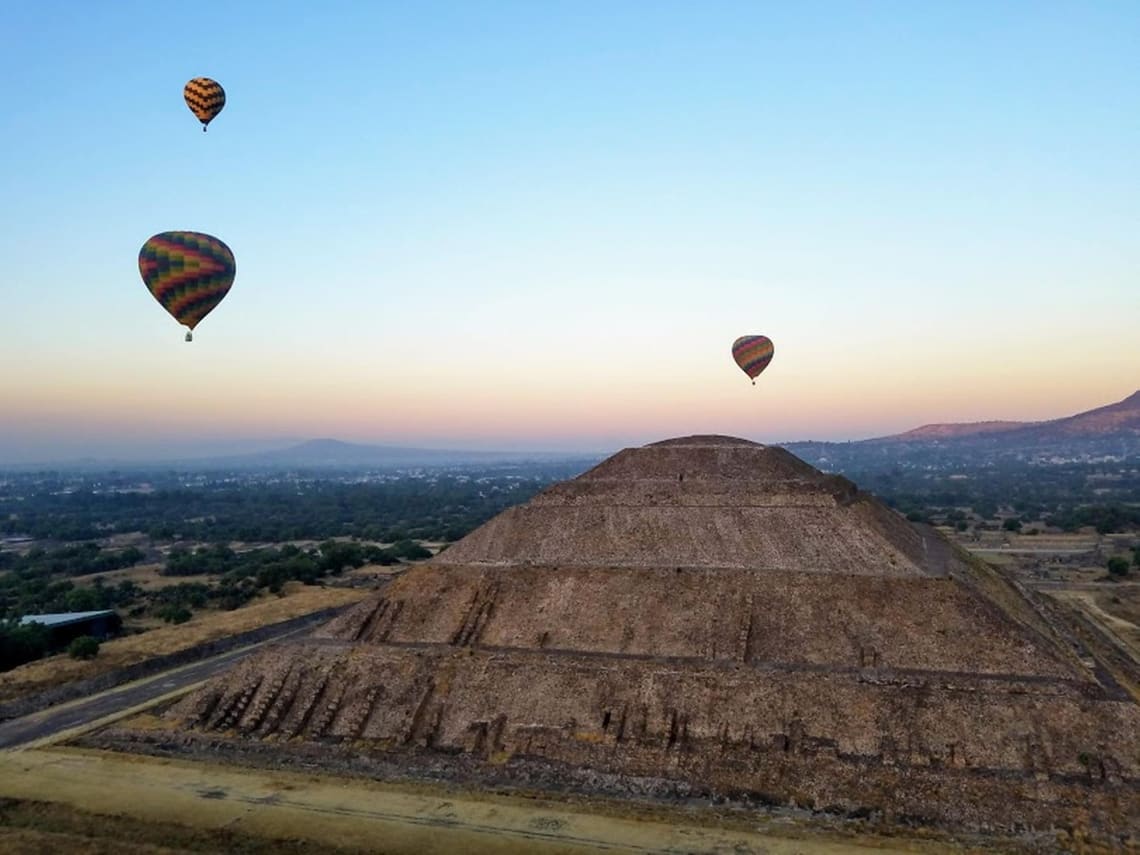
Health risks such as food poisonings, malaria and recently the coronavirus could be another worry.
The public water system in Mexico isn’t reliable. Tap water in almost all of Mexico is unsuitable for drinking and can cause illnesses such as food poisonings, stomach flu or salmonella. Do not drink tap water, always buy bottled water, or use filtration system.
Food poisoning and other stomach issues are a common occurrence in Mexico, and it is estimated that 20%-50% of travellers suffer from stomach problems during their trip.
Most of the problems are easily cured, but if the symptoms do not pass or get worse a traveller should head to a health clinic (Instituto Mexicano de Seguro Social or IMSS), which are easily available all over the country and accept all foreigners. The healthcare provided by those clinics is good enough and at a low cost.
Salmonella, stomach upset, or food poisoning is probably the worst thing that could happen when travelling in Mexico, health wise.
Malaria risk is low and there is no risk of yellow fever. Although rabid dogs are found, Mexico is not a high-risk country and treatment is easily available.
Chiapas is notorious for food poisonings and salmonella infections. Many travellers avoid street food and water (including ice) in San Cristobal de las Casas, however most of the country offers safe ways to eat street food. Generally, street food is safe to eat and encouraged to try on your trip.
You should also be aware of dehydration due to strong heat and ensure you’re always carrying (bottled or filtered) water with you and use electrolytes (or drink plenty of coconut water!) to make sure your body can handle the heat.
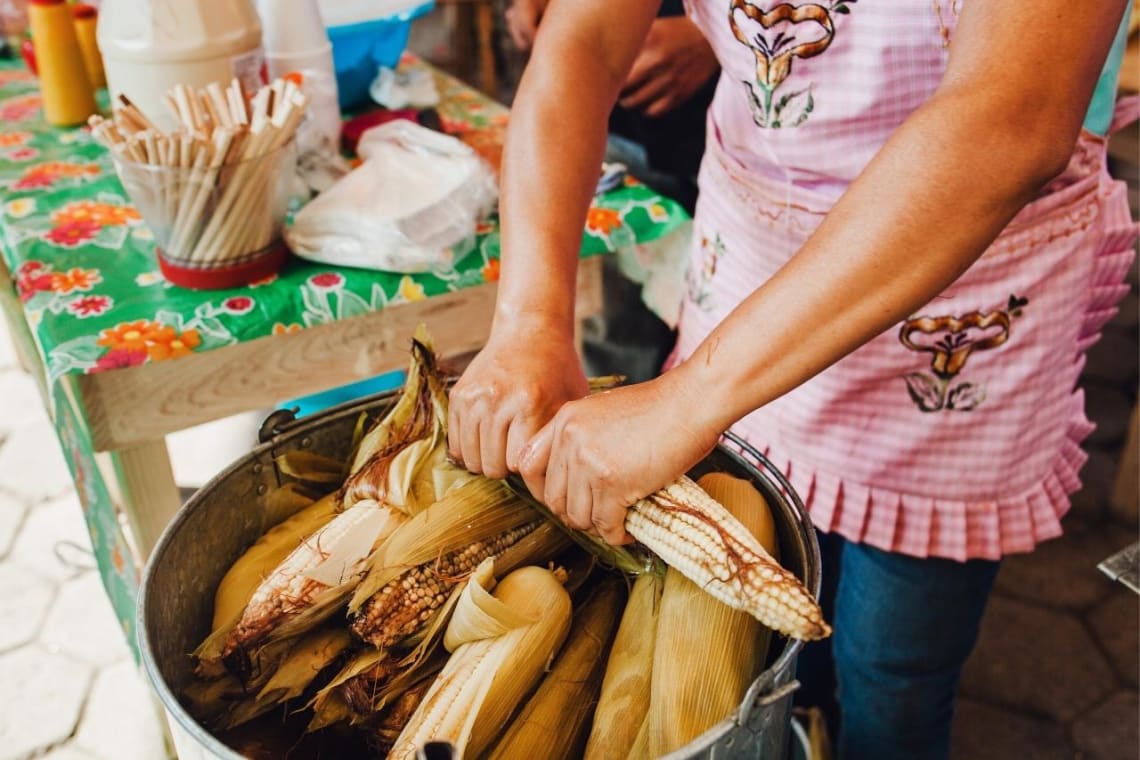
In conclusion...
Mexico is safe to travel in and you should absolutely choose Mexico as your next destination! Do not let fear get in a way of your dreams.
However... it is also worth remembering that crime there is a pressing issue. When it comes to security and safety and protection from crime, travellers have the privilege of statistically being safer than the locals.
Do not skip Mexico based on what you hear in the media. Mexico is a truly incredible country and most of the locals are good people with good intentions, that care about tourists.
Listen to what they have to say about the safety in the country, and if they tell you that where you are or where you plan to go is unsafe, reconsider going, go as a group or with a local guide.
Travel as a group to feel safer, don’t carry all your cash and in case of assault simply hand in all you have. Your phone and savings can be replaced, but your precious health and life cannot.
Be aware of your surroundings and always listen to your instincts. For emergency in Mexico use the number 911.
Keep exploring North and Central America:
Would you like to volunteer during your visit to Mexico? Subscribe to the Worldpackers Community for free and start saving your favorite volunteer positions until you are ready to get verified.
Write here your questions and greetings to the author
David
Aug 14, 2023
I will be visiting Mexico is coming December. Kinda researching on the places to visit.
David
Sep 19, 2023
Here's are finding so far
Safety and Security:
Only travel during daylight hours if possible
Take care of withdrawing money at exchange shop only
Beware of pickpocketing
Beware of people representing themselves as police
Should you hire a tour guide for your visit in Cancun, Mexico? Here are Pros about it.
1. You get to see all the major points of interest.
2. You always have someone to take your photo.
3. You get to meet other travellers.
4. You don’t have to worry about transportation.
5. You get the inside scoop.
Here are cons of having a tour guide:
1. It always feels rushed.
2. There are usually people in your footage.
3. [For introverts only] You have to spend time with other travellers.
4. Certain tours might not be worth your investment.
5. Guided tours can be exhausting.
Sources:
https://travel.state.gov/content/travel/en/traveladvisories/traveladvisories/mexico-travel-advisory.html
https://gowithguide.com/mexico/cancun